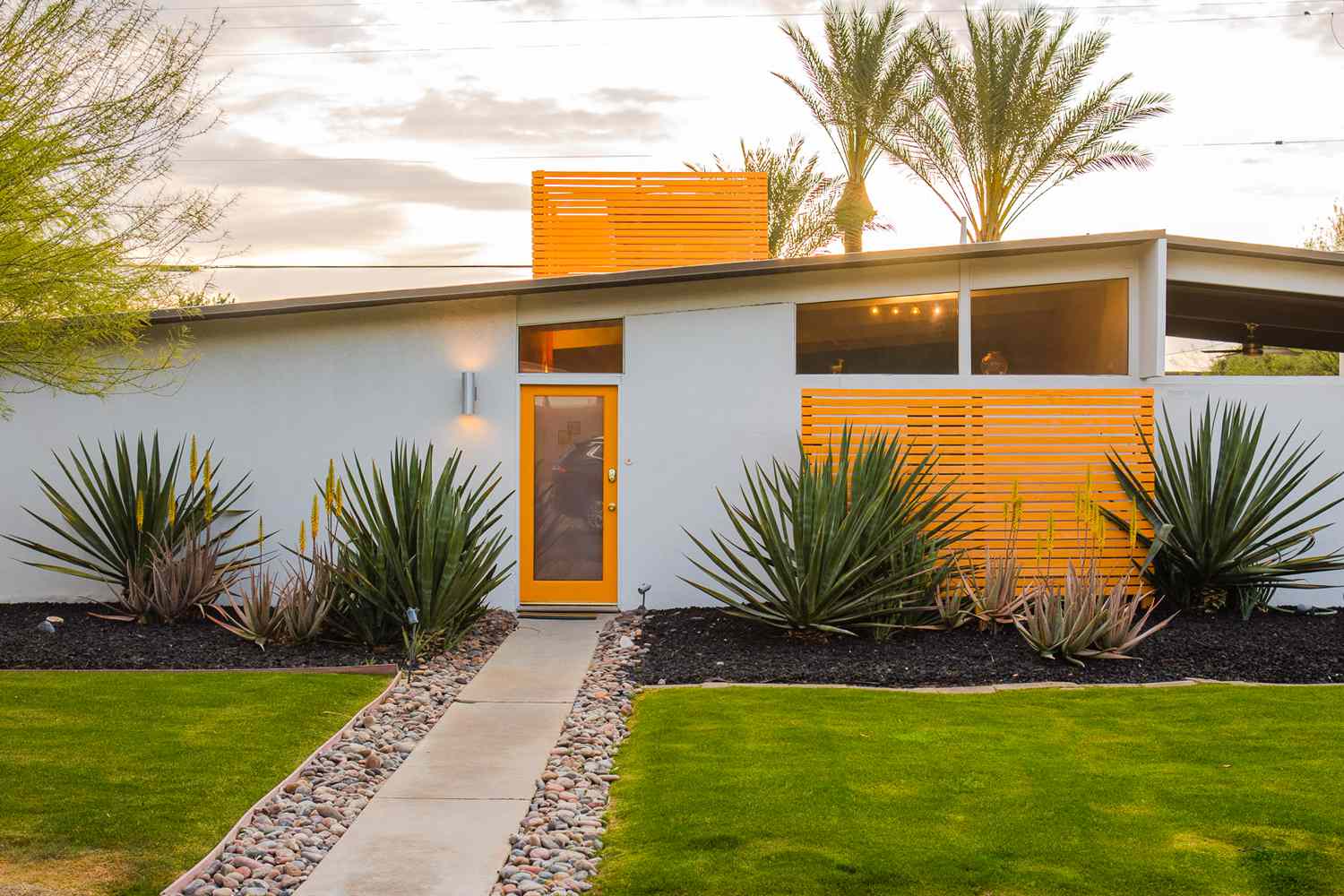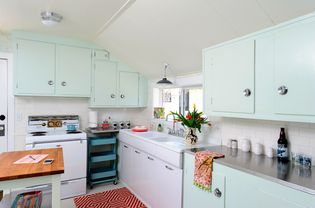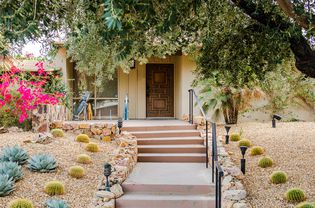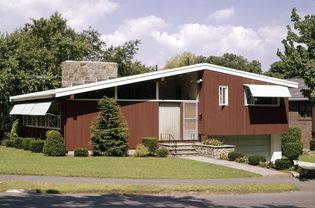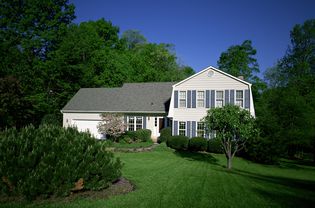Known for clean lines, minimal decoration, and connection with nature, midcentury modern architecture is an American classic that kicked off after World War II. A midcentury modern house plan is characterized by a very wide, low footprint with large, open spaces, floor-to-ceiling windows, and an emphasis on bringing the outdoors in.
Although midcentury modern architecture boomed all across America from 1945 to 1969, it's seen a major resurgence in recent years. Interior decorating styles that draw inspiration from midcentury style, like Scandinavian design and Danish Modern, have made this style accessible to millions of new homeowners.
History
Taking influences from Bauhaus and American high-prairie style homes, midcentury modern architecture was brought to the United States by European architects fleeing Nazi Germany. Some original midcentury modern designers include Walter Gropius, Ludwig Mies van der Rohe, and Marcel Breuer. Frank Lloyd Wright, the father of modern architecture, actually trained many midcentury modern architects.
After World War II, Americans put a major emphasis on lifestyle, family time, and spending time in nature. Midcentury modern homes built across America's suburbs reflected those ideals, with large windows that provided views of homeowners' backyards, open living spaces where the whole family could entertain, and technological upgrades—especially in the kitchen—so homeowners spent less time cleaning and more time with their families.
During its original boom from 1945 to 1969, midcentury modern architecture was divided into three distinct styles:
- International: Inspired by international architects—as the name implies—this version of midcentury modern architecture was heavily influenced by the Bauhaus movement. Homes were extremely simple, with little to no decoration, and were typically finished with stucco.
- Contemporary: The most popular midcentury modern style, contemporary homes featured clean lines, floor-to-ceiling windows, and more natural, organic-feeling materials, like wood, stone, and brick. Many of these homes have asymmetrical exteriors with windows extending to the roofline and exposed ceilings and beams in the interior.
- Organic: A smaller subset of midcentury modern architects emphasized blending their homes into their natural surroundings. Rather than building structures with sharp lines and right angles, they embraced homes with more natural shapes. Because organic midcentury modern homes were so heavily influenced by their natural surroundings, an organic midcentury modern home in a forest would look entirely different than an organic midcentury modern home in the desert.
:max_bytes(150000):strip_icc()/garden-designs-for-midcentury-modern-homes-4590079-hero-c092b2ef453f4f3c9d6438fbc78b2dd8.jpg)
The Spruce / Sarah Crowley
:max_bytes(150000):strip_icc()/what-is-ranch-house-landscaping-4777231-hero-b33b61a8c6514baf93028a0980f7fb94.jpg)
The Spruce / Sarah Crowley
:max_bytes(150000):strip_icc()/what-is-ranch-style-4777678-hero-9674d3d1338042c5bfb34101ab42f2d9.jpg)
The Spruce / Sarah Crowley
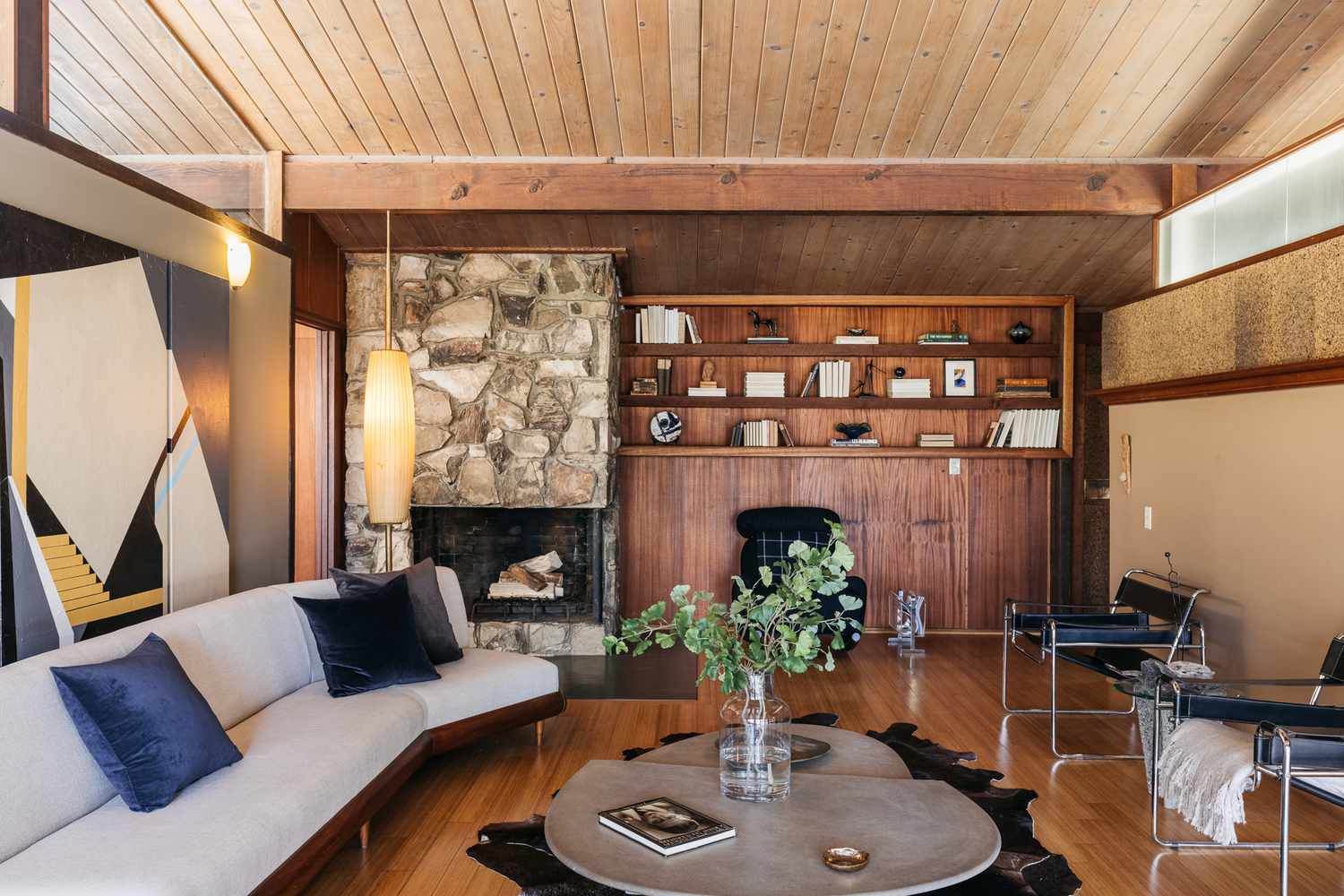
The Spruce / Christopher Lee Foto
:max_bytes(150000):strip_icc()/GettyImages-200343731-002-871047c8a0cd4d288f478a6a067fbb30.jpg)
Characteristics of Midcentury Modern House Plans
Although there are three versions of this style of architecture, most of these houses in the United States share the following must-have elements of midcentury modern homes:
Clean Lines and Geometric Shapes
Straight lines and right angles are essential to midcentury modern architecture. Although many modern ranch-style homes feature gabled roofs or asymmetrical exteriors, most midcentury modern homes have flat roofs with straight lines.
Floor-to-Ceiling Windows
Nature and lifestyle were emphasized in the original midcentury modern homes, so they were built with floor-to-ceiling windows with views of the yard, sliding glass doors, and many access points to the outdoors.
Changes in Elevation
Many midcentury modern homes are split-level, with short staircases connecting rooms throughout the house. Partial brick or glass walls, fireplaces centered in rooms, and cabinetry also add depth and variation in elevation in the homes' interiors.
Minimal Decoration
Although some midcentury modern styles are more ornate than others, simplicity is a key characteristic of the movement. Simple furnishings with clean lines and a muted color palette complement the homes' simple exteriors. Midcentury modern colors include warm earth tones such as orange, brown, mustard, or golden yellow. Though these are popular colors from this period, not all of these colors are found in every home of this style.
Access to the Outdoors
Connecting with nature is a key value in midcentury modern architecture, so most midcentury modern homes have multiple access points to the outdoors. In some homes, even single rooms have several doors and windows to access the outdoor living space.
Where to Find Midcentury Modern Homes
When soldiers returned from World War II, they built midcentury homes all across the United States—meaning, you'll find midcentury modern homes in virtually every town in every state in the United States.
The largest collection of midcentury modern homes, however, can be seen in Palm Springs, California. Some of the world's most famous midcentury modern architects built homes, hotels, motels, and other structures in Palm Springs, and many homeowners building new construction replicate the style.
-
What year is a midcentury modern home?
Midcentury modern homes are considered to be houses built between 1945 to 1969, give or take a few years on either end.
-
What is the difference between midcentury and midcentury modern homes?
Though the terms are used interchangeably, technically there is a subtle difference between a home decorated with midcentury and midcentury modern decor. Some people also refer to midcentury modern as a subset of midcentury decor. Midcentury decor refers to a more ornate style, such as Art Deco, and some might argue this includes Art Nouveau. Midcentury modern decor refers to a style with more of a utilitarian aesthetic incorporating clean lines and basic shapes.
-
What does midcentury modern mean in interior design?
Midcentury modern in interior design typically refers to the furniture and decor associated with the styles of this period. A few famous examples include the Eero Saarinen Tulip Table, an Eames Fiberglass Side Chair, and Ludwig Mies van der Rohe's Barcelona Chair.
:max_bytes(150000):strip_icc()/donnelly-headshot-5b720013c9e77c00504bb502-b0e1053c0875458e951148b930bd93ac.jpg)
:max_bytes(150000):strip_icc()/_DSC3035-89e8764848db4aa6901d9451b9b15923.jpeg)
